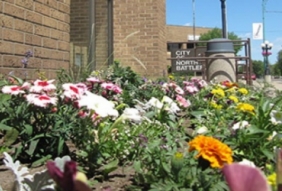
Posted on July 4, 2016
By John Cairns, News-Optimist
The City of North Battleford Operations Department must address an urgent situation where sand buildup has been blocking water intake from the North Saskatchewan River.
To address the situation council gave its approval for dredging work at Monday’s meeting. A tender was awarded to North Fringe Industrial Technologies in the amount of $124,104.75, taxes included.
The plan is to start dredging this week and it is expected to last up to 16 days. The goal is to get the job done in 14 days but two extra days are added for leeway.
The sand buildup has been on the radar of officials going back to last year.
In 2015, administration informed council they were getting worried about sand buildup at the F.E. Holliday water treatment plant intake structure.
According to Director of Operations Stewart Schafer, dredging did not happen at that time, and officials “kept our fingers crossed,” hoping a good spring thaw runoff might move the sand and resolve the problem.
“We did not get that,” said Schafer.
Instead, the sand was pushed further into the intake structure to the point that in April and May the City was forced to hire consultants to come in and pump the sand out.
Schafer later told reporters that they called in the divers to take a look at the structure because the intake was plugged.
“They walked out to the river in a full wet suit with a mask, and it only came up to their calf,” said Schafer. “And he turned around and said very quietly, as he took his mask off, ‘I think I see your problem.’”
It took about a week to create a hole around the intake, eight feet deep and eight feet in diameter, said Schafer.
That fix lasted a month, he said. The consultants had to be called back in again because “we’d noticed we were starting to have problems with water coming into the intake structure.”
The sand was again pumped out and sandbags were placed around the structure to keep the sand out. By this point, Schafer said, the tender process was well under way to bring the dredger in.
The tendering for dredging came back last Friday, and the recommendation was to go with North Fringe Industrial Technologies.
The total cost so far, including the earlier work, is around $232,000, Schafer said.
To stay in budget for 2016, the operations department has been forced to rearrange its capital expenditures for the year. A couple of projects will be delayed to next year, one of which was the rejuvenation of the wells at Water Treatment Plant No.1. The decommissioning of another well will have to wait as well. The remaining amount is made up of savings that were found.
The dredging should resolve the current issues at the intake structure, for now.
But officials have expressed big concerns this will only be a temporary fix and that the sand could end up being a common occurrence in that area, potentially costing the city big money to deal with.
“Is there any way to know if we’re going to be having this conversation annually?” asked Councillor Ryan Bater. He wanted to know if the work being done would be a long-term solution.
“That is a frustrating question both to myself and to the water treatment plant operators,” admitted Schafer.
“Is there a guarantee? No there is not. As you say, the sandbars come in and come out. This is the first time in records that we can find where the intake has to be dredged.”
Schafer went on to note how dire the situation really was at the intake.
He pointed out that if you wore large gumboots 12 inches high “you could possibly walk out to the intake structure and stand on top of it without getting your feet wet. It is serious. Please make no doubt about this. We are quite concerned about it. I would invite council to take a look and see how low the water is in that area.”
In speaking with reporters later Schafer noted there were concerns about sandbars back in 2008, but there was a good spring runoff from the mountains that year.
“It pushed the sand right by the intake and plunked it downstream about 50 feet. This time, it just didn’t arrive. We didn’t have the snow melt in the mountains that we needed.”
The situation needed to be addressed, simply to ensure there is enough water for the entire city.
“The city uses approximately two million cubic metres a year in water,” said Schafer.
One million comes from F.E. Holliday while the other million comes from Water Treatment Plant No.1, which is the groundwater plant.
“Neither treatment plant can operate the total city’s load on high demand, especially when it’s warm, and we are having a warm year. So we are concerned.”
As for long-term options, Schafer said they could put in a second intake, but that would be expensive. As well, they would need to find a location that could not only avoid sandbanks but also not cause harm to any endangered fish species in the North Saskatchewan River.
In speaking to council, City Manager Jim Puffalt said they were looking into more permanent ways to address the issue.
“We are researching other options. As the director says, we are somewhat at the mercy of the river, so if we have to do some other measures we can take to get the intake further out or something along those lines, that’s what we’re researching right now.”
Source: News-Optimist





